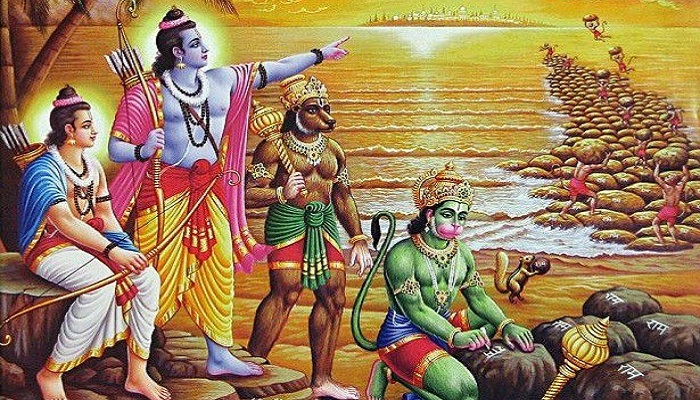
Everyone knows how Ram and his army reached Lanka, by building a bridge. What you probably thought was that it is just a story, a myth. This will prove you wrong.
The spotlight is back on the mythological ‘Ram Setu’ between India and Sri Lanka, after a show on the Science Channel, owned by Discovery Communications in the US hinted that such a structure may actually exist outside of mythology.

A promo released by the channel suggests that the bridge – also called Adam’s Bridge – may not be a natural formation and may have been built by humans.
Are the ancient Hindu myths of a land bridge connecting India and Sri Lanka true? Scientific analysis suggests they are. #WhatonEarth pic.twitter.com/EKcoGzlEET
— Science Channel (@ScienceChannel) December 11, 2017
The promo has got more than 1.1 million views since it was shared by Science Channel on social media 16 hours ago.
“Are the ancient Hindu myths of a land bridge connecting India and Sri Lanka true? Scientific analysis suggests they are,” says text accompanying the promo.
Citing images from a NASA satellite, the show claims that investigators have found a line of rocks 30 miles long between Sri Lanka and India.
The stones in the image are sitting on a ‘sandbar’, which occurs in areas with shallow water. As geologist Erin Argyilan explains, the sand could accumulate between the land masses.
An analysis of the rocks found on the seabed shows that they predate the sand, Rose adds.
Specifically, the 7,000-year-old rocks are sitting on sand that is 4,000-years-old.
In fact, geologist Dr. Alan Lester believes that the stones were brought from afar and set atop the sandbar island chain.
Smriti Irani, the minister for information and broadcasting, also retweeted the video, with the caption ‘Jai Shri Ram’.
?? ???? ??? ???? https://t.co/M85KFnyZIY
— Smriti Z Irani (@smritiirani) December 11, 2017
A shipping canal project proposed by the UPA-I government in 2005 that would have required dredging the area and damaging the formation was opposed by the BJP-led NDA, which is expected to file an affidavit against the project in the Supreme Court later this month.
Satellite imagery show formations that scientists believe are limestone shoals. Creating a 83-km-long deep water channel under the Sethusamudram canal project would require extensive dredging and removal of the limestone shoals.
The project was criticised not just for hurting religious sentiments but also for threatening the marine biodiversity of the region.
The Science Channel trailer supports the theory that the bridge is man-made based on studies found atop the formation and quoting scientists from Indiana University Northwest, University of Colorado Boulder, and Southern Oregon University. At the time of the publishing of this article, the researchers had not responded to calls for comment.
Irani’s retweet of the trailer met with an outpouring of support and some ridicule. One Twitter user wondered why the Archaeological Survey of India wasn’t doing anything to resolve the matter.
“Jai Sri Ram….but what was ASI doing? This could have been done by us rather than science channel telling us. But no even after 2014 leftist thugs will still rule academics, NCERT, history,” a Twitter user by the name Sandeep Singh, said.
The Indian Council of Historical Research announced in March that it would conduct underwater studies to answer this very question. A report was expected in November, but archaeologist and former ASI director Alok Tripathi, who submitted the proposal, said work is yet to begin.
“We have not done the fieldwork. There are some formalities pending for the project to start,” Tripathi said. “Our conclusions will depend on what we find.”
The UPA-I government stirred up a storm when it filed an affidavit in Supreme Court saying there was no evidence that Ram Setu was a place of worship. The affidavit was later withdrawn.
On November 12, the court gave the government six weeks’ time to file an affidavit on their stance. Subramanian Swamy, who filed the petition in the court opposing the project, told that the Narendra Modi government had decided to file a new affidavit suggesting alternative routes for the Sethusamudram project.
Sethusamudram Shipping Canal Project is a proposed project to create a shipping route in the shallow straits between India and Sri Lanka. This would provide a continuously navigable sea route around the Indian Peninsula.

Post Your Comments